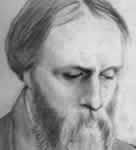 ‘I mean by a picture a beautiful romantic dream of something that never was, never will be – in a light better than ever shone – in a land that no one can define or remember, only desire – and the forms divinely beautiful..’ Edward Burne-Jones
‘I mean by a picture a beautiful romantic dream of something that never was, never will be – in a light better than ever shone – in a land that no one can define or remember, only desire – and the forms divinely beautiful..’ Edward Burne-Jones
Edward Burne-Jones was born in August 1833 in Birmingham, where he attended King Edward’s School. As a young man he was more interested in literature than in art, and he studied theology at university with the intention of becoming a clergyman. He went to Exeter College, Oxford, where William Morris was also a student and the two became lifelong friends, with a shared interest in literature and religion. Both Burne-Jones and Morris, influenced by the writings of Ruskin, were concerned with restoring to art the purity of form and moral aspirations of medieval painting and design.
 At Oxford, Burne-Jones was particularly interested in writing and in book illustration. He had a passion for Mallory’s Morte d’Arthur and other medieval legends. He abandoned theology when he met Dante Gabriel Rossetti and on leaving Oxford, he moved to London to study art and to learn first-hand from Rossetti’s example. Morris soon followed. Burne-Jones’ own work was strongly influenced by Rossetti, and he became a leading Pre-Raphaelite painter. He visited Italy, and Italianate influences can be seen in many of his paintings. While Burne-Jones’ style was influenced by Rossetti, his subject matter came from legends and fairy-tales with a powerful leaning to ideas of chivalry and romance. He also drew on classical mythology and retained a strong interest in religion. His early work consisted mainly of drawings and watercolours, and he also became involved in the design of stained-glass windows.
At Oxford, Burne-Jones was particularly interested in writing and in book illustration. He had a passion for Mallory’s Morte d’Arthur and other medieval legends. He abandoned theology when he met Dante Gabriel Rossetti and on leaving Oxford, he moved to London to study art and to learn first-hand from Rossetti’s example. Morris soon followed. Burne-Jones’ own work was strongly influenced by Rossetti, and he became a leading Pre-Raphaelite painter. He visited Italy, and Italianate influences can be seen in many of his paintings. While Burne-Jones’ style was influenced by Rossetti, his subject matter came from legends and fairy-tales with a powerful leaning to ideas of chivalry and romance. He also drew on classical mythology and retained a strong interest in religion. His early work consisted mainly of drawings and watercolours, and he also became involved in the design of stained-glass windows.
In 1860 Burne-Jones married Georgiana MacDonald, whom he had known since childhood. They had two children: Philip (also a painter), and Margaret, who was the model for the sleeping princess in the Briar Rose paintings.
 Burne-Jones became an important contributor to the revival of medieval applied arts led by Morris and for Morris’s firm he designed stained-glass windows, mosaics, and tapestries. His work included both stained-glass windows for Christ Church in Oxford and the stained glass windows for Christ Church on Southgate Green! The two lancet windows above are the matched pair to the left of the altar in Christ Church Southgate. In Burne-Jones account book is written ‘Southgate. Small design of Good Samaritan and Dorcas and touching photograph if needful …10/-‘ Clearly the cartoons for the windows were prepared using photographic enlargements from Burne-Jones’ small drawings with some retouching.
Burne-Jones became an important contributor to the revival of medieval applied arts led by Morris and for Morris’s firm he designed stained-glass windows, mosaics, and tapestries. His work included both stained-glass windows for Christ Church in Oxford and the stained glass windows for Christ Church on Southgate Green! The two lancet windows above are the matched pair to the left of the altar in Christ Church Southgate. In Burne-Jones account book is written ‘Southgate. Small design of Good Samaritan and Dorcas and touching photograph if needful …10/-‘ Clearly the cartoons for the windows were prepared using photographic enlargements from Burne-Jones’ small drawings with some retouching.
Christ Church’s North Aisle also contains 8 windows from designs by Edward Burne-Jones representing the Christian virtues